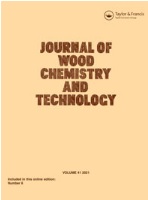Ver ítem
- xmlui.general.dspace_homeCentros e Institutos de InvestigaciónCIRN. Centro de Investigaciones de Recursos NaturalesInstituto de Recursos BiológicosArtículos científicosxmlui.ArtifactBrowser.ItemViewer.trail
- Inicio
- Centros e Institutos de Investigación
- CIRN. Centro de Investigaciones de Recursos Naturales
- Instituto de Recursos Biológicos
- Artículos científicos
- Ver ítem
Prediction of the extractives content of Eucalyptus globulus wood using NIRbased PLS-R models. Influence of spectral range and preprocessing on the percentage of outliers detected
Resumen
Eucalyptus globulus is an important pulpwood source due to favorable wood characteristics, including low extractive content. However, there is significant tree-to-tree variation that can be exploited in breeding. This requires screening a large number of samples, which NIR and PLS-R make possible. Models are typically developed for a specific set of samples prepared in the same way. The question is: how well these models predict samples that are different
[ver mas...]
Eucalyptus globulus is an important pulpwood source due to favorable wood characteristics, including low extractive content. However, there is significant tree-to-tree variation that can be exploited in breeding. This requires screening a large number of samples, which NIR and PLS-R make possible. Models are typically developed for a specific set of samples prepared in the same way. The question is: how well these models predict samples that are different from the ones used in the model. Models developed to determine the extractive content of Eucalyptus globulus wood from Australia were used to E. globulus wood from Argentina,
which differed in age and sample preparation. The main difference between spectra of the two origins was in the OH combination band, despite the fact that samples were dried identically.
Due to this difference, models that included the O-H band assigned above 73% of the spectra as outliers regardless of preprocessing, whereas models that did not include the O-H band assigned fewer spectra as outliers. The differences in the OH band were attributed
primarily to differences in particle size and extractive content, rather than to differences in humidity content. However, all models predict similar results for all samples, including outliers.
[Cerrar]

Autor
Simões, R.;
Alves, A.;
Pathauer, Pablo Santiago;
Palazzini, Dino;
Marcucci Poltri, Susana Noemi;
Rodrigues, J.;
Fuente
Journal of wood chemistry and technology 42 (5) : 352-360 (2022)
Fecha
2022-07-08
Editorial
Taylor & Francis
ISSN
1532-2319
Formato
pdf
Tipo de documento
artículo
Palabras Claves
Derechos de acceso
Restringido
 Excepto donde se diga explicitamente, este item se publica bajo la siguiente descripción: Creative Commons Attribution-NonCommercial-ShareAlike 2.5 Unported (CC BY-NC-SA 2.5)
Excepto donde se diga explicitamente, este item se publica bajo la siguiente descripción: Creative Commons Attribution-NonCommercial-ShareAlike 2.5 Unported (CC BY-NC-SA 2.5)

